
Innovative Vivistim Therapy Shows Promise for Stroke Recovery at ISC 2025
The 2025 International Stroke Conference (ISC) has become a pivotal platform for showcasing advancements in stroke rehabilitation, particularly with the spotlight on the Vivistim® Paired VNS Therapy. Dr. Ronald P. Benitez, a neurosurgeon affiliated with Atlantic Brain and Spine, is set to present compelling outcomes data derived from the largest real-world cohort of ischemic stroke survivors treated with Vivistim. This breakthrough device, manufactured by MicroTransponder®, Inc., is FDA-approved as a Breakthrough Device and represents a significant leap in the way stroke rehabilitation can be approached.
Vivistim employs a dual strategy of vagus nerve stimulation (VNS) combined with tailored occupational or physical therapy. This innovative pairing enables stroke survivors to achieve improvements in hand and arm functionality that are reported to be 2 to 3 times greater than traditional therapy methods alone. The data that Dr. Benitez will discuss reflects positive patient responses even on average 3.6 years post-stroke, indicating the therapy’s potential efficacy within the chronic stroke patient demographic.
During his oral presentation on February 5, 2025, Dr. Benitez will share several key insights from his methodology and results:
These promising results are echoed among other Vivistim practitioners, which together encompass a significant portion of the Joint Commission Comprehensive Stroke Centers. Notably, they represent about 50% of Becker's 2024 top 100 programs in neurology and spine care. As the field's interest in chronic stroke recovery grows, other sessions at ISC 2025 will also delve into supplementary neurostimulation techniques and therapies aimed at maximizing stroke rehabilitation outcomes.
The real-life applications of Vivistim therapy are aptly illustrated through patient stories like that of Kathy R., who underwent the implant procedure in 2023. Kathy, a survivor of an ischemic stroke, expressed that with the Vivistim therapy, she not only experienced improvements in daily living activities but actively maintained enhanced upper extremity function through self-initiated vagus nerve stimulation. The ability to use the Vivistim Magnet to stimulate her vagus nerve for 30 minutes at a stretch has extended the therapy's benefits far beyond the initial six-week in-clinic period.
Kathy's renewed independence allows her to carry out everyday tasks, embracing abilities she thought were permanently lost following her stroke in 2020. Her gratitude is shared by many who see promise in the innovations presented at this conference. Dr. Benitez's findings, alongside the ongoing development of Vivistim technologies, offer vital hope to recovery efforts for stroke survivors worldwide. Those interested can further explore the potential of Vivistim at Vivistim.com, where clinical bibliographic resources and safety information are also available.
Headquartered in Austin, Texas, MicroTransponder, Inc. is at the forefront of developing neuroscience solutions aimed at restoring quality of life for individuals experiencing sensory and motor function impairments due to neurological conditions. The Vivistim Paired VNS™ System stands out as a groundbreaking, clinically validated medical technology, proving to significantly enhance upper limb function in stroke survivors. For more accurate details about products and safety, visiting their dedicated site can be very insightful.
The Mechanism of Vivistim Therapy
Vivistim employs a dual strategy of vagus nerve stimulation (VNS) combined with tailored occupational or physical therapy. This innovative pairing enables stroke survivors to achieve improvements in hand and arm functionality that are reported to be 2 to 3 times greater than traditional therapy methods alone. The data that Dr. Benitez will discuss reflects positive patient responses even on average 3.6 years post-stroke, indicating the therapy’s potential efficacy within the chronic stroke patient demographic.
Data Presentation Highlights
During his oral presentation on February 5, 2025, Dr. Benitez will share several key insights from his methodology and results:
- - The study involved 25 patients with moderate to severe motor impairments in their upper limbs.
- - The procedure followed standard VNS surgical protocols, not requiring additional training for the surgical team.
- - Vivistim implants were performed safely without any reported infections or complications.
- - Of the original 25 participants, 22 completed the six-week Vivistim Therapy protocol.
- - Patients’ ages ranged from 40 to 80 years old (mean age: 62.6 years), and implantation occurred between one and eleven years post-stroke.
- - Noteworthy improvements were observed, with Fugl-Meyer Assessment-Upper Extremity (FMA-UE) scores increasing from an average baseline of 33 to 43 post-therapy, marking an average enhancement of 9.53 points. Moreover, the participant with the longest follow-up (22 months) demonstrated continued progress, successfully reducing the time taken for tasks by nearly one minute.
Broader Implications and Network Support
These promising results are echoed among other Vivistim practitioners, which together encompass a significant portion of the Joint Commission Comprehensive Stroke Centers. Notably, they represent about 50% of Becker's 2024 top 100 programs in neurology and spine care. As the field's interest in chronic stroke recovery grows, other sessions at ISC 2025 will also delve into supplementary neurostimulation techniques and therapies aimed at maximizing stroke rehabilitation outcomes.
Patient Testimonials and Future Prospects
The real-life applications of Vivistim therapy are aptly illustrated through patient stories like that of Kathy R., who underwent the implant procedure in 2023. Kathy, a survivor of an ischemic stroke, expressed that with the Vivistim therapy, she not only experienced improvements in daily living activities but actively maintained enhanced upper extremity function through self-initiated vagus nerve stimulation. The ability to use the Vivistim Magnet to stimulate her vagus nerve for 30 minutes at a stretch has extended the therapy's benefits far beyond the initial six-week in-clinic period.
Kathy's renewed independence allows her to carry out everyday tasks, embracing abilities she thought were permanently lost following her stroke in 2020. Her gratitude is shared by many who see promise in the innovations presented at this conference. Dr. Benitez's findings, alongside the ongoing development of Vivistim technologies, offer vital hope to recovery efforts for stroke survivors worldwide. Those interested can further explore the potential of Vivistim at Vivistim.com, where clinical bibliographic resources and safety information are also available.
About MicroTransponder
Headquartered in Austin, Texas, MicroTransponder, Inc. is at the forefront of developing neuroscience solutions aimed at restoring quality of life for individuals experiencing sensory and motor function impairments due to neurological conditions. The Vivistim Paired VNS™ System stands out as a groundbreaking, clinically validated medical technology, proving to significantly enhance upper limb function in stroke survivors. For more accurate details about products and safety, visiting their dedicated site can be very insightful.
Topics Health)

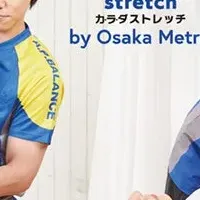




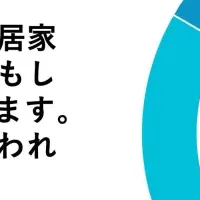
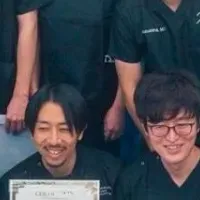
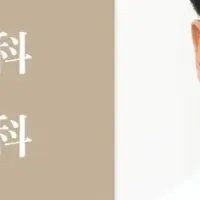
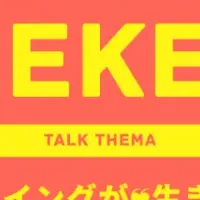
【About Using Articles】
You can freely use the title and article content by linking to the page where the article is posted.
※ Images cannot be used.
【About Links】
Links are free to use.